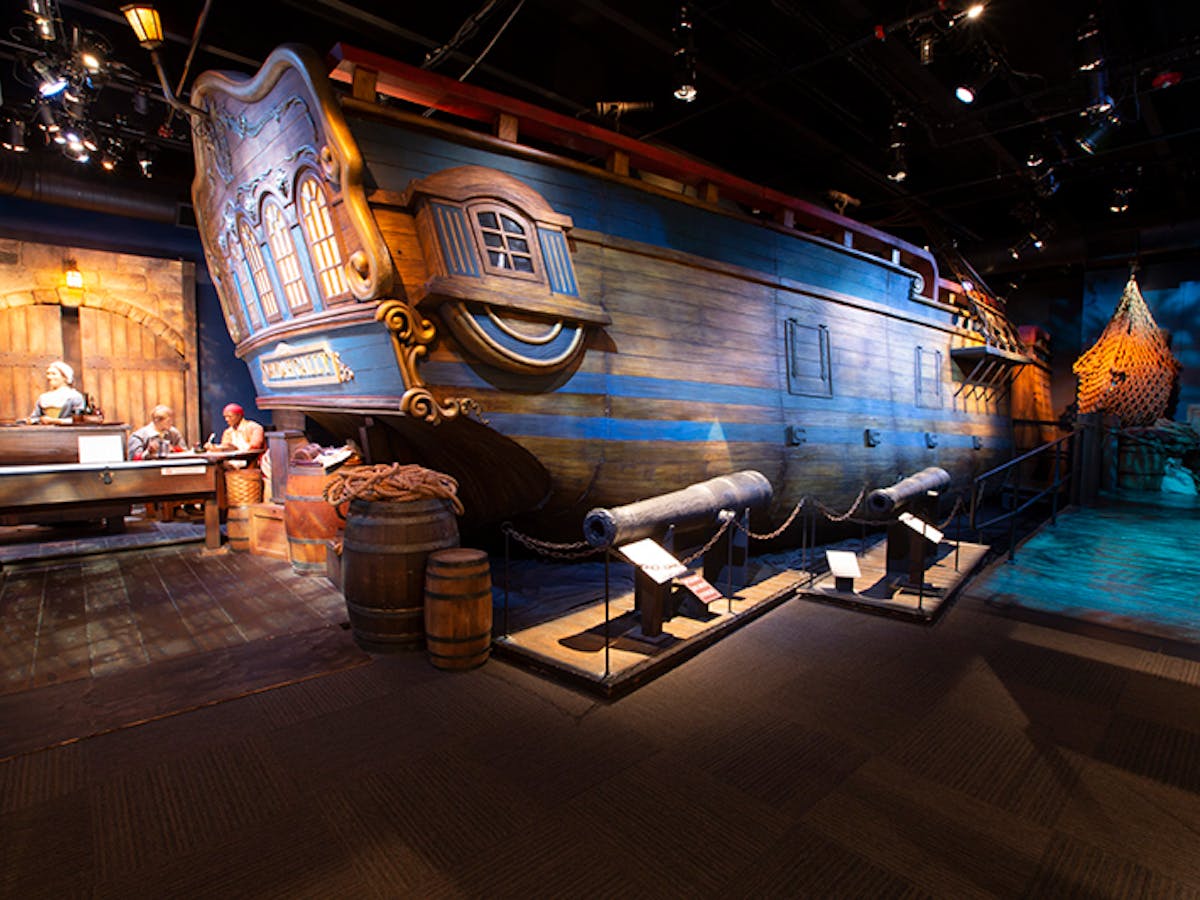Whydah Pirate Museum In West Yarmouth, MA
Real Pirates and Pirate Treasure
The Whydah Pirate Museum in West Yarmouth officially opened its doors to the public in June of 2016. The museum is home to thousands of items from the Whydah and houses the largest collection of pirate artifacts recovered from a single shipwreck anywhere in the world.
The Whydah Pirate Museum combines artifacts of the slave trade and the pirate’s life, early maps of the Atlantic and the Caribbean, and imagery of the 18th-century world. The results are a rich and interesting tapestry that echoes and extends the experience of the exhibition itself and reveals a historically accurate portrait of real pirates of the Caribbean.
Explore Our Pirate Exhibits And Artifacts
The museum contains multiple exhibit wings, the bell theatre room, a walk-through partial replica of the Whydah Gally, a gift shop and bookstore, and the SeaLab and Learning Center—the museum’s onsite conservation laboratory. The museum is a state-of-the-art facility with LED theatre lighting, flatscreen displays, and surround sound speakers.




A Dedication To Pirate History Recovery And Education
As artifacts and treasure are continuously excavated, new exhibits are added to the Whydah Pirate Museum every year. The West Yarmouth museum is still new with additional museum wings and an outdoor area planned for future development.
Since its opening, the Whydah Pirate Museum has been visited by hundreds of thousands of guests from every state in the United States, and dozens of countries worldwide. The museum has received numerous awards and critical acclaim for its preservation and presentation of the world’s first discovered pirate ship.
The staff of the Whydah Pirate Museum are grateful to be part of the Cape Cod community and look forward to providing the public with many years of education and enjoyment.




